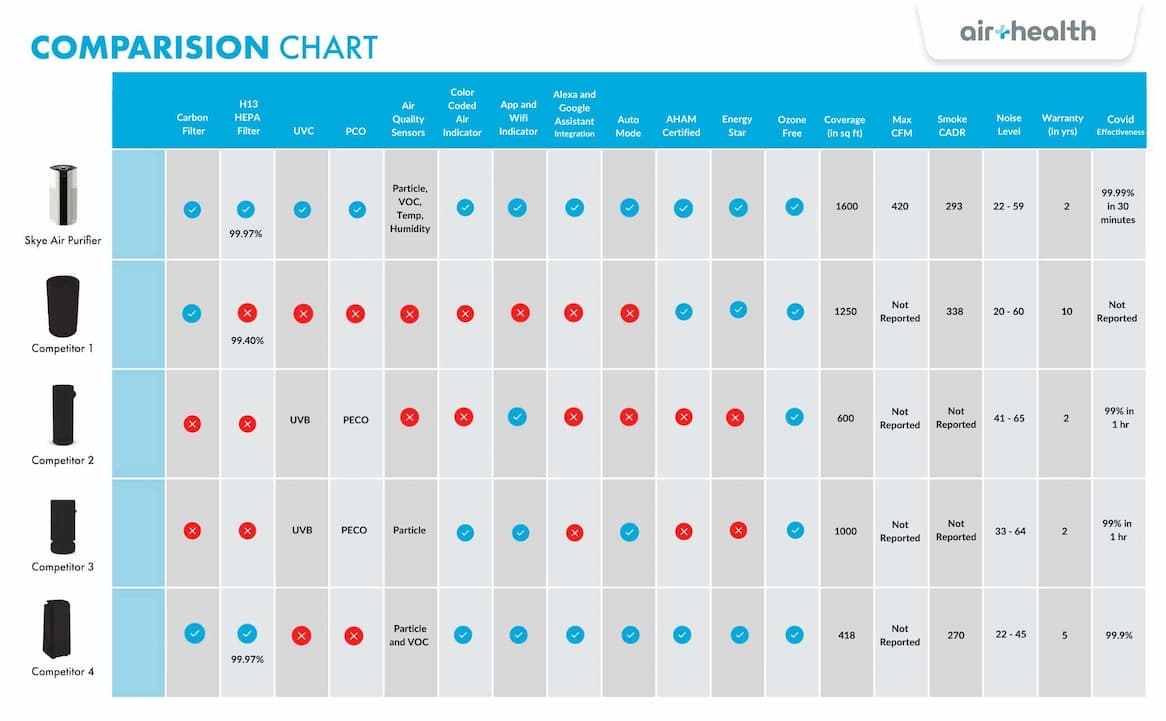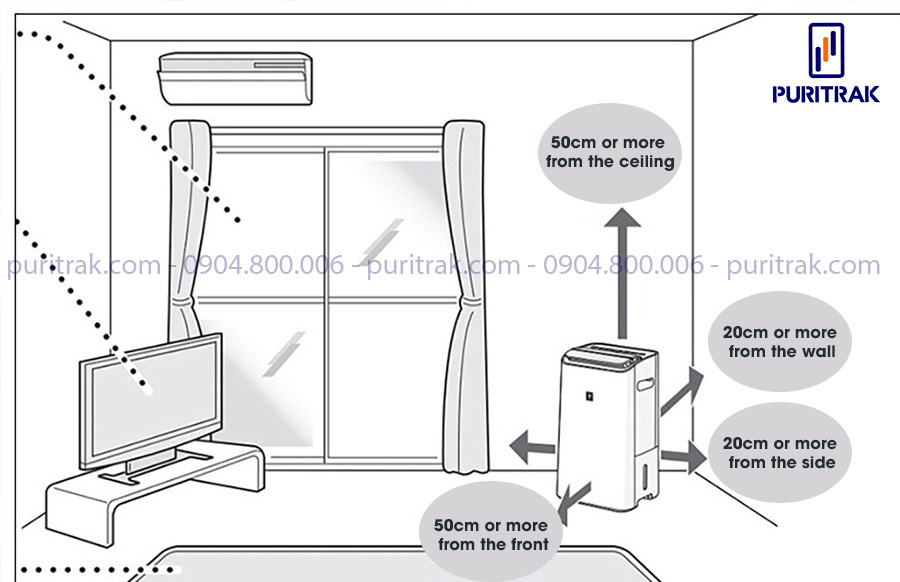Are you struggling with allergies, asthma, or just want to breathe easier while you sleep? An air purifier can be a game-changer, but knowing how to use it effectively in your bedroom is crucial. A quick fix is to simply plug it in and turn it on, but maximizing its benefits requires a bit more understanding.
This comprehensive guide will walk you through everything you need to know about using an air purifier in your bedroom, from choosing the right model and placement to optimizing its settings and maintaining it for peak performance. By the end of this article, you’ll be equipped to create a healthier, more restful sleep environment.
Choosing the Right Air Purifier for Your Bedroom

Before diving into usage, selecting the correct air purifier is paramount. Not all models are created equal.
Key Features to Consider
- Room Size: Air purifiers are rated by the square footage they can effectively clean. Ensure the purifier’s CADR (Clean Air Delivery Rate) matches or exceeds your bedroom’s size.
- Filter Types:
- HEPA Filter: Captures 99.97% of particles 0.3 microns in size, including dust, pollen, pet dander, and mold spores. Essential for allergy sufferers.
- Activated Carbon Filter: Removes odors, smoke, and volatile organic compounds (VOCs).
- Pre-Filter: Captures larger particles, extending the life of other filters.
- CADR (Clean Air Delivery Rate): Higher CADR means faster cleaning. Look for separate CADR ratings for dust, pollen, and smoke.
- Noise Level: Bedrooms require quiet operation. Check the decibel (dB) rating, particularly for nighttime use.
- Smart Features: Some purifiers offer app control, air quality monitoring, and auto mode.
Optimal Air Purifier Placement in Your Bedroom

Where you place your air purifier significantly impacts its effectiveness.
Best Locations
- Central Location: Position the purifier in the center of the room to allow for maximum airflow.
- Away from Obstructions: Avoid placing it behind furniture, curtains, or near walls, which can restrict airflow.
- Elevated Surface: Placing the purifier on a table or nightstand can improve air circulation.
- Close to the Source of Pollutants (If Known): If you have a specific allergen source (e.g., a pet bed), position the purifier nearby.
Locations to Avoid
- Corners: Limits airflow.
- Directly Against Walls: Restricts circulation.
- Under the Bed: Poor airflow and potential dust accumulation.
Setting Up and Operating Your Air Purifier

Once positioned, proper setup and operation are vital.
Initial Setup
- Unboxing & Filter Installation: Carefully unpack the purifier and install the filters according to the manufacturer’s instructions.
- Powering On: Plug in the purifier and turn it on.
- Initial Run: Run the purifier on the highest setting for a few hours initially to quickly cleanse the air.
Fan Speed Settings
- Low: Quiet operation, ideal for nighttime use. Maintains air quality.
- Medium: Balanced cleaning and noise level, suitable for daytime use.
- High: Maximum cleaning power, recommended for initial purification or when air quality is poor.
- Auto Mode: Automatically adjusts fan speed based on detected air quality. A convenient option for consistent air purification.
Timer Settings
- Utilize the timer function to schedule operation, for example, running the purifier for an hour before bedtime.
Maintaining Your Air Purifier for Peak Performance
Regular maintenance is crucial for optimal performance and longevity.
Filter Replacement Schedule
| Filter Type | Replacement Frequency |
|---|---|
| Pre-Filter | Every 1-3 months |
| HEPA Filter | Every 6-12 months |
| Activated Carbon Filter | Every 3-6 months |
Cleaning the Exterior
- Weekly: Wipe down the exterior with a damp cloth.
- Monthly: Vacuum the intake and exhaust vents to remove dust accumulation.
Sensor Maintenance (If Applicable)
- Some purifiers have sensors that can become dusty. Follow the manufacturer’s instructions for cleaning them.
Pro Tips for Maximizing Air Purifier Effectiveness
Go beyond the basics with these expert tips.
- Keep Bedroom Doors Closed: Confines pollutants to the bedroom, allowing the purifier to work more efficiently.
- Regular Vacuuming & Dusting: Reduces the overall pollutant load in the room.
- Control Humidity: High humidity can promote mold growth. Use a dehumidifier if necessary.
- Avoid Smoking Indoors: Smoke is a significant air pollutant.
- Open Windows Occasionally (When Air Quality is Good): Provides fresh air ventilation.
- Consider a Second Purifier for Larger Bedrooms: For very large bedrooms, multiple purifiers can provide better coverage.
- Don’t Forget Filter Maintenance: Neglecting filter replacement drastically reduces effectiveness.
When to Seek Professional Help
Sometimes, an air purifier isn’t enough.
Signs You Need Professional Assistance
- Persistent Allergy Symptoms: Despite using an air purifier, your allergies remain severe.
- Mold Growth: Visible mold indicates a larger problem requiring professional remediation.
- Unexplained Odors: A persistent odor may indicate a hidden source of pollution.
- HVAC Issues: Problems with your HVAC system can contribute to poor indoor air quality.
Finding a Qualified Professional
- Look for certified HVAC technicians or indoor air quality specialists.
- Check online reviews and ask for recommendations.
FAQ Section
Q: How often should I run my air purifier?
A: Ideally, run your air purifier 24/7 for continuous air purification. If that’s not feasible, run it for several hours each day, especially while you sleep.
Q: Will an air purifier help with COVID-19?
A: Air purifiers with HEPA filters can help reduce airborne particles, including those carrying viruses like COVID-19, but they are not a substitute for other preventative measures like vaccination and masking.
Q: Can I use an air purifier with essential oils?
A: Most air purifiers are not designed for use with essential oils, as they can damage the filters. Check your purifier’s manual before attempting this.
Q: How do I know if my air purifier is working?
A: You may notice a reduction in allergy symptoms, less dust accumulation, and improved air quality. Some purifiers have air quality indicators that can show you the current air quality level.
Enjoy a Healthier Bedroom
By following these guidelines, you can effectively use an air purifier in your bedroom to create a cleaner, healthier, and more restful sleep environment. Don’t underestimate the power of clean air – it can significantly improve your overall well-being.
Have you noticed a difference in your sleep or allergy symptoms since using an air purifier? Share your experience in the comments below!





